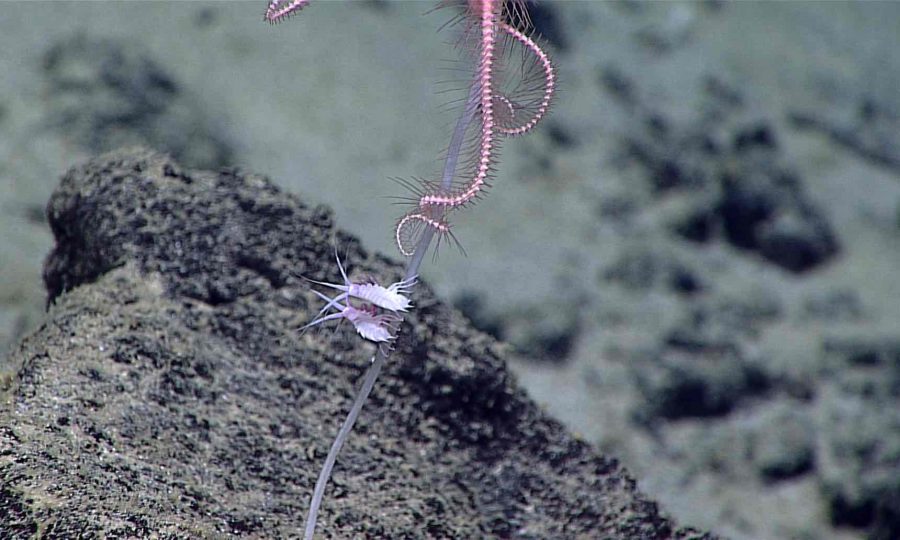A recent study carried out by researchers at the University of Aberdeen found out that there is a significant bioaccumulation of organic pollutants in the deepest parts of the Pacific Ocean.
The chemicals were mostly polychlorinated biphenyls (PCBs) and polybrominated diphenyl ethers (PBDEs) which were banned in manufacturing during the 20th century due to their high toxicity and polluting potential. Using immersion vehicles, the research team retrieved tiny ocean animals in the Mariana and Kermadec trenches, which are over 6 miles deep.

“The legacy and reach of anthropogenic influence is most clearly evidenced by its impact on the most remote and inaccessible habitats on Earth,” reads the first paragraph of the study, published in Nature.
Human pollution has no limits
The researchers acknowledged that oceans consist on the most prolific biomes in the planet although its deepest sections appear to be working as a landfill for pollutants produced on the surface. They revealed that the deep trenches at the bottom of the ocean formed at tectonic subduction zones, became the least explored ecosystem on Earth to show traces of contamination, all while being the “last major marine ecological frontier.”
Only until recently, oceanic trenches had been considered pristine in their conservation status, but due to their location and topography, they have started to become the place where maritime contaminants end up.

Persistent organic pollutants get released to the environment mainly due to industrial accidents, leakages, and improper disposal. The most important appear to be PCB and PDBDE, which were used as dielectric fluid and flame retardants respectively. Only 65 percent of these harmful compounds are believed to be contained in landfills or still employed in manufacturing, and they have been proven to be unable to decompose through natural processes.
To measure the degree of PCB and PBDE contamination in the deepest reaches of the ocean, researchers took samples of small crustaceans known as amphipods in the Mariana Trench, located in the North Pacific, and in the Kermadec Trench in the South Pacific. The specimens were picked up from between 7,000 and 10,000-meter deep.
PCBs and PBDEs were present in all samples of all species at all depths in both trenches, although the highest levels of contamination were measured in the upper sections of the trench, around 7,000 meters.
Hard to reach for us, not for contaminants
The crustaceans from the Mariana Trench were at least 50 times more contaminated with PCB than crabs found in the delta of the Liaohe River, one of the most polluted rivers in China.
PCB contamination levels were also higher in the Mariana Trench compared to the Kermadec. Researchers, led by Alan J. Jamieson, believe that the higher levels of contamination may be due to the trench’s proximity to an industrialized area in the Pacific known as the Great Pacific Garbage Patch. This means that the Mariana Trench is located below a giant mass of plastic debris that sinks into the ocean as its components degrade.

“We still think of the deep ocean as being this remote and pristine realm, safe from human impact, but our research shows that, sadly, this could not be further from the truth. The fact that we found such extraordinary levels of these pollutants really brings home the long-term, devastating impact that mankind is having on the planet,” stated Jamieson to The Guardian.
A second theory is that deep-sea fauna may get in contact with pollutants due to contaminated carcasses that sink to the trench. This is a less impacting approach because contamination levels appeared to be somewhat steady as the samples were analyzed from different depths. Another theory is that different species may be more prone to the bioaccumulation of pollutants thanks to their physiology and metabolism, although this is unlikely due to PCB contamination being present in all of the analyzed specimens.
Jamieson commented that any carrion residue that reaches the bottom of the Mariana gets devoured by the small fish and crustaceans that live there, including the 2 cm-long amphipods that they analyzed.
Researchers noted that the study is a sample of how the ocean floor is all but remote and unreachable, putting in evidence the scientific claim that we humans know more about the moon’s surface than our oceans’ floors. Currently, the same team led by Jamieson is analyzing more sea animals to understand the effects of plastic pollution, which apparently can spread easily all over the ocean.
Jamieson acknowledged that, even if persistent organic pollutants have been banned and their effects on the environment are understood, there is still the possibility of plastics becoming the new protagonist in ocean contamination.
Source: The Guardian
